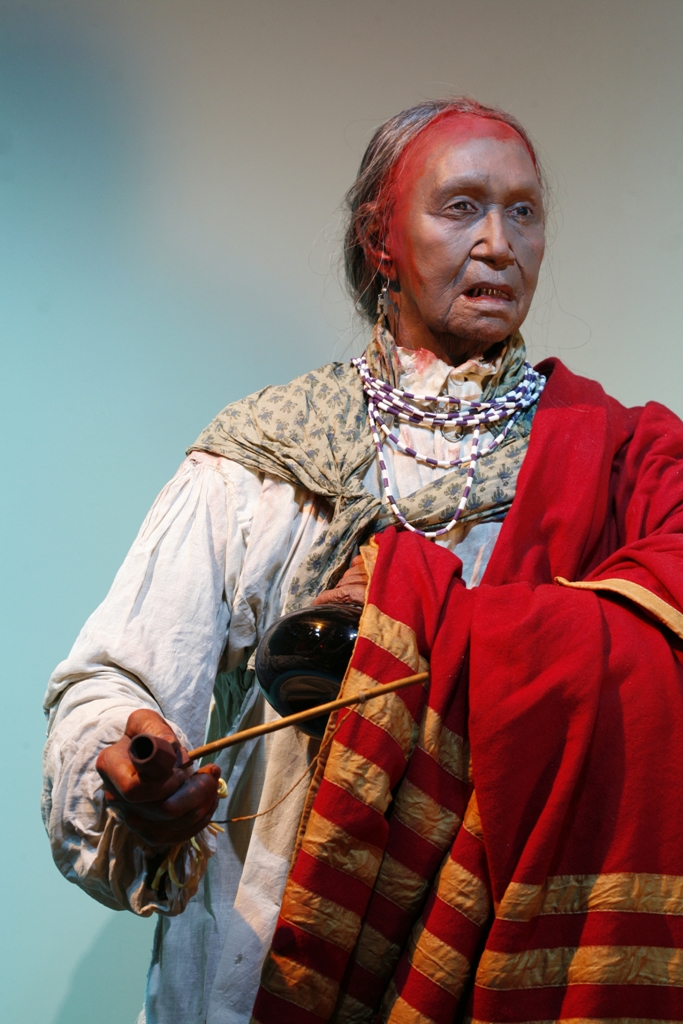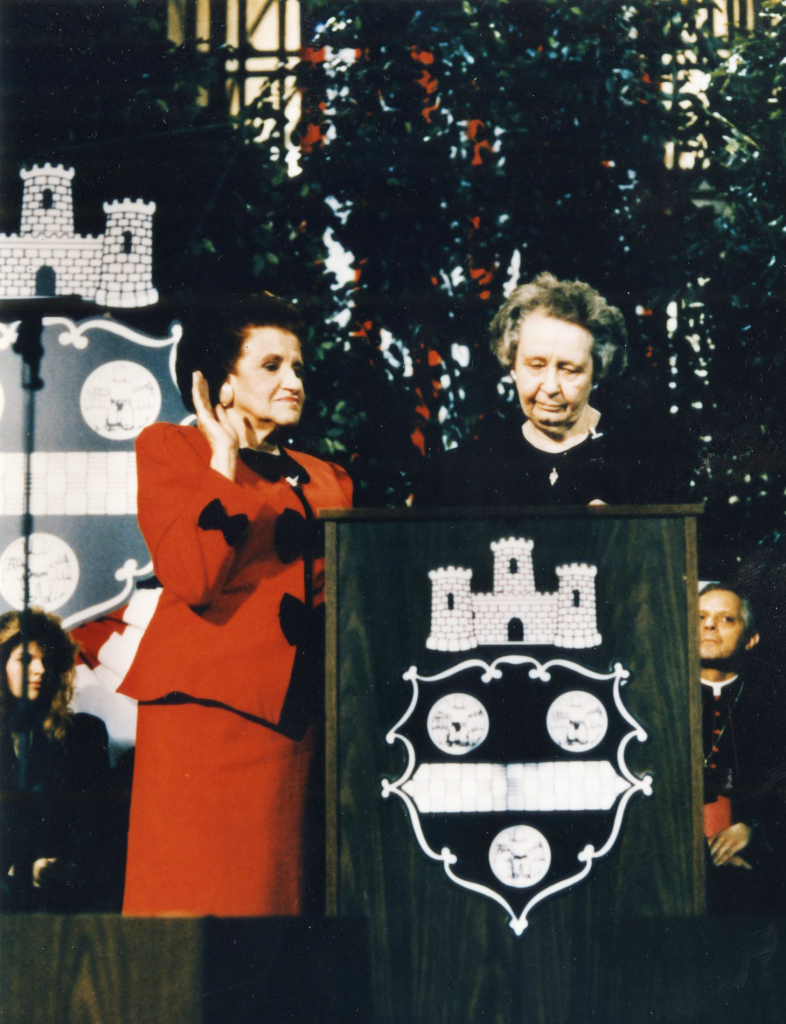March is the perfect time to tour the History Center and focus on the contributions that women from this region have made to history. To celebrate Women’s History Month, here are just a couple of the women you will meet when you visit, both political leaders:

Queen Aliquippa, Seneca Leader
A life-like museum figure of Seneca leader Queen Aliquippa greets visitors to the Pittsburgh: A Tradition of Innovation exhibition gallery.
Much of Aliquippa’s early life is shrouded in mystery, revealed only in brief accounts by French and British envoys. We know that, by the 1740s, she lived in Western Pennsylvania and led a group of about 30 Seneca families.
Fiercely loyal to the British throughout her life, she met twice with Conrad Weiser, an interpreter and diplomat to the Native Americans. In 1748, they met to negotiate a treaty between the western Indians and Pennsylvania. He reported a Logstown visit where Aliquippa requested gunpowder and shot to “enable her to send out the Indian boys to kill turkey & other fowls for her, whilst the men are gone to war against the French.”
Later, in 1794, Celeron, the commander of a French expedition, attempted to pay the Queen homage as she camped near present-day McKees Rocks. She rebuffed him. “The Iroquois inhabit this place and it is an old woman of this nation who governs it,” Celeron wrote. “She regards herself as sovereign. She is entirely devoted to the English.”
She confirmed that impression, meeting with a young George Washington, who wrote, “… went up three miles to the mouth of the Youghiogheny River to visit Queen Aliquippa, who had expressed great concern that we passed her in going to the Fort.” Aliquippa must have trusted Washington; she, her son, and their followers joined him at the Great Meadow to witness the battle at Fort Necessity. After the defeat, they fled to George Croghan’s Augswich homestead in present-day Huntingdon County. There, the tired and sick Seneca leader lived out her last months. She died on Dec. 23, 1754. “Alequeapy, ye old quine is dead,” Croghan recorded in his journal.
Her name lives on in the town of Aliquippa, Beaver County, and in the ridge and gap near Augswich.

Sophie Masloff, Pittsburgh’s First Female Mayor
In the fourth floor Special Collections Gallery, a bright red business suit stands out in the section that features the Jewish Collection.
Sophie Masloff, Pittsburgh’s first female and first Jewish mayor, wore this suit at her inauguration in 1990. Her career in public service and politics spanned more than 50 years. But her roots were humble.
Born to immigrant Romanian-Jewish parents in Pittsburgh’s Hill District, Masloff was raised by her mother after her father passed away when she was just two years old. Masloff went on to graduate from Fifth Avenue High School and then began volunteering for the Democratic Party. She worked as a secretary for Allegheny County while still a teenager. Within three years, she became a minute clerk in the Court of Common Pleas, where she superved jury selections. When she married her husband Jack, whom she was married to for 52 years, she kept it secret, as it violated the county’s policy of hiring only unwed female employees.
Eventually, Masloff ascended to Pittsburgh’s City Council, winning her seat in 1976 and, later, serving as the first female president of Council in 1988. That same year, after the untimely death of Mayor Richard Caliguiri, she unexpectedly became mayor. After finishing his term, Masloff successfully ran for mayor herself at the age of 71, serving until 1994.
Masloff never missed an election, keeping her perfect voting record until she died, and she never lost her belief in the importance of public service.
Anne Madarasz is the Museum Division Director & Co-Director of the Western Pennsylvania Sports Museum.